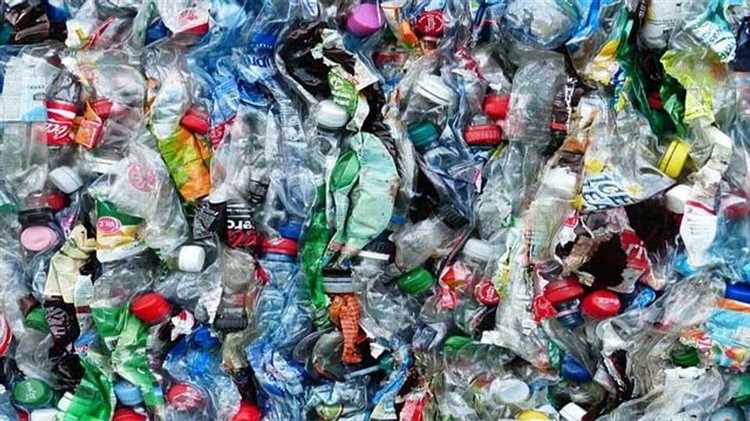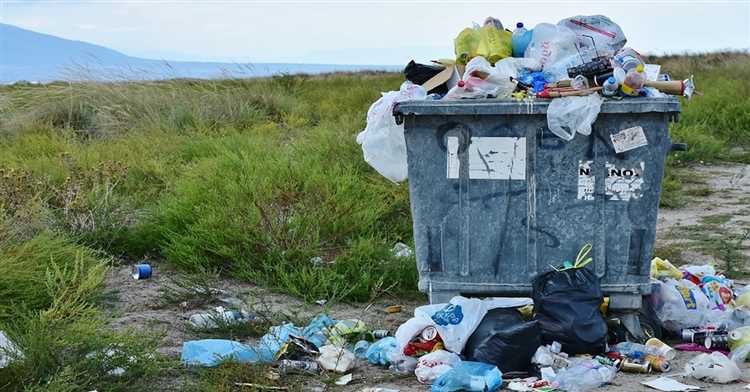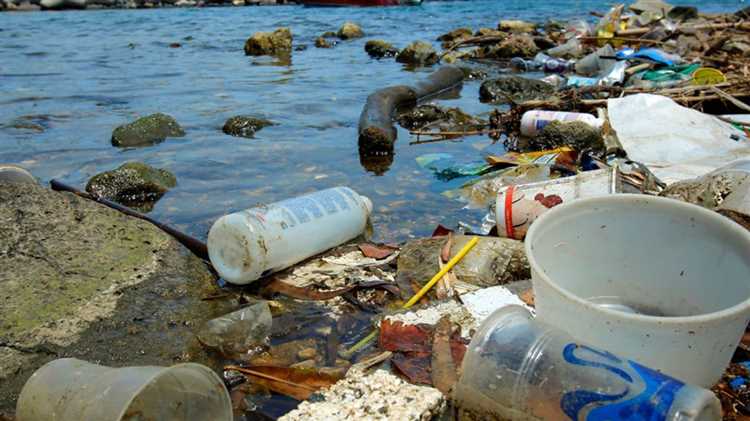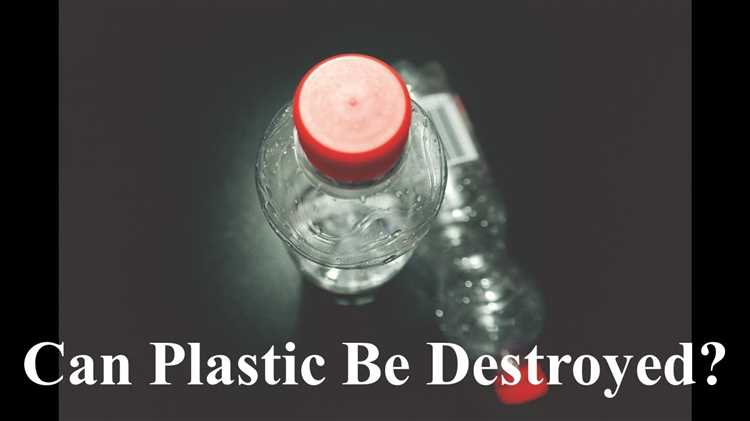
In recent years, the global issue of plastic pollution has reached alarming proportions. Plastic waste has become a major environmental problem, with devastating effects on marine life, ecosystems, and human health. As a result, there is an urgent need for effective methods to destroy plastic in a way that does not contribute to further pollution.
Traditional methods of plastic disposal, such as landfilling and incineration, are not only inefficient but also contribute to the release of toxic gases and chemicals into the atmosphere. These methods do little to address the ecological crisis caused by plastic pollution. Thankfully, there are innovative and environmentally-friendly approaches being developed to tackle this issue head-on.
One promising method is pyrolysis, a process that involves heating plastic waste in the absence of oxygen to break it down into its basic components. This method not only reduces plastic waste volume but also produces valuable byproducts such as oil, gas, and carbon black. These byproducts can be used as raw materials in various industries, reducing the demand for fossil fuels and minimizing the environmental impact.
Another effective method is chemical recycling, which involves the use of chemical processes to transform plastic waste into new, high-quality materials. This method has the advantage of producing a product that is chemically identical to virgin plastic, without relying on fossil fuels as raw material. Chemical recycling has the potential to revolutionize the way we treat plastic waste and create a circular economy where plastics are continuously reused, reducing the need for new production and minimizing pollution.
- Understanding the Problem
- Challenges Faced
- Lack of Infrastructure
- Cost and Energy Consumption
- Regulatory Constraints
- Public Awareness
- Traditional Methods of Plastic Destruction
- New Innovations in Plastic Destruction
- Future Prospects
- Q&A:
- What are the negative effects of plastic pollution on the environment?
- What are some effective methods for pollution-free plastic destruction?
- How does mechanical recycling work?
- What is the role of chemical recycling in plastic destruction?
Understanding the Problem
Plastic pollution has become a major concern for the environment and human health worldwide. It is estimated that more than 8 million metric tons of plastic waste end up in the ocean each year, causing harm to marine life and ecosystems. Plastic waste also affects terrestrial environments, polluting rivers, lakes, and soil.
The main contributors to plastic pollution are single-use plastics such as plastic bags, bottles, and packaging materials. The problem arises from the fact that plastic is a durable material and takes hundreds of years to break down naturally, leading to its accumulation in the environment.
Another challenge with plastic waste disposal is the inefficient recycling infrastructure in many parts of the world. Plastic recycling rates are still low, with only a small fraction of plastic waste being effectively recycled. The rest either ends up in landfills or is incinerated, causing further pollution and contributing to greenhouse gas emissions.
Not only does plastic pollution harm the environment, but it also poses a threat to human health. Microplastics, tiny plastic particles that are less than 5mm in size, have been found in various food and water sources, including seafood. These microplastics can contain harmful chemicals and toxins, which can accumulate in the body and lead to potential health problems.
Given the severity of the plastic pollution problem, there is an urgent need for effective methods to destroy plastic waste without causing further harm to the environment. Finding innovative solutions and technologies is crucial to mitigate the impact of plastic pollution and move towards a cleaner and more sustainable future.
| Key Points: |
|---|
| – Plastic pollution is a global concern affecting both marine and terrestrial environments. |
| – Single-use plastics contribute significantly to plastic pollution. |
| – Inefficient recycling infrastructure leads to low plastic recycling rates. |
| – Plastic pollution poses a threat to human health through the ingestion of microplastics. |
| – Innovative solutions are needed to effectively destroy plastic waste. |
Challenges Faced
While there have been significant advancements in finding effective methods for pollution-free plastic destruction, several challenges still exist. These challenges hinder the widespread implementation of such methods and need to be addressed for a sustainable solution.
Lack of Infrastructure
One of the major challenges is the lack of infrastructure to support large-scale plastic destruction. The current infrastructure is not equipped to handle the massive amount of plastic waste generated globally. This leads to inefficient and costly processes for plastic destruction.
Cost and Energy Consumption

Another challenge is the cost and energy consumption associated with pollution-free plastic destruction methods. Many of the innovative methods require high energy inputs and expensive equipment, making them economically unfeasible for many regions.
| Challenge | Solution |
| Lack of Infrastructure | Investment in the development of infrastructure specifically designed for plastic destruction. |
| Cost and Energy Consumption | Research and development to optimize existing methods and reduce energy consumption. |
| Regulatory Constraints | Collaboration between governments and plastic industry to develop and implement regulations for pollution-free plastic destruction. |
| Public Awareness | Education and awareness campaigns to promote responsible plastic waste management. |
Regulatory Constraints

Regulatory constraints also pose a challenge in the implementation of pollution-free plastic destruction methods. There is a need for collaboration between governments and the plastic industry to develop and implement regulations that promote pollution-free plastic destruction.
Public Awareness

Lack of public awareness and education regarding responsible plastic waste management is another challenge. Many people are still unaware of the impact of plastic pollution and the importance of proper plastic waste disposal. Education and awareness campaigns are essential to promote responsible plastic waste management.
Traditional Methods of Plastic Destruction
Traditional methods of plastic destruction have been widely used for many years, but they often come with negative consequences for the environment. These methods include:
- Burning: Burning plastic is a common method of disposal, but it releases harmful toxins into the air, contributing to air pollution and respiratory problems.
- Landfill: Landfills are another traditional method of plastic disposal. However, plastic does not break down easily, and it can take hundreds of years to decompose, causing long-term pollution and environmental damage.
- Dumping in the ocean: Some countries have been known to dispose of their plastic waste by dumping it in the ocean. This practice not only harms marine life but also contributes to the growing problem of plastic pollution in our oceans.
- Incineration: Incineration is another method used to destroy plastic, but it releases toxic gases and pollutants into the atmosphere, which can have detrimental effects on both the environment and human health.
These traditional methods of plastic destruction have proven to be unsustainable and harmful to the environment. It is essential to find alternative solutions that are both effective and environmentally friendly.
New Innovations in Plastic Destruction
Plastic pollution has become a global crisis that requires innovative solutions for effective and pollution-free plastic destruction. Fortunately, scientists and researchers around the world are working tirelessly to develop new methods and technologies to tackle this problem head-on.
Here are some of the new innovations in plastic destruction that show promise in combating plastic pollution:
-
Chemical Recycling: This method aims to break down plastic waste into its basic chemical building blocks, which can then be used to create new plastic products. It offers a more sustainable alternative to traditional recycling methods and has the potential to significantly reduce plastic pollution.
-
Biodegradable Plastics: Scientists are developing biodegradable plastics that can quickly and safely decompose in natural environments. These innovative materials have the potential to prevent long-term pollution and reduce the reliance on traditional plastics.
-
Plastic-Eating Enzymes: Researchers have discovered certain enzymes that have the ability to devour plastic. These enzymes can break down specific types of plastics, providing a natural and sustainable approach to plastic destruction.
-
Advanced Recycling Technologies: New technologies are being developed to improve the efficiency of plastic recycling. These methods utilize advanced techniques such as pyrolysis and gasification to convert plastic waste into valuable products like fuel or chemicals.
-
Nanotechnology: Nanomaterials are being explored for their potential in breaking down plastics at the molecular level. This approach offers a precise and efficient method of plastic destruction, with minimal environmental impact.
These new innovations in plastic destruction hold great promise for combating plastic pollution and creating a sustainable future. By investing in research and development, we can pave the way for a cleaner and healthier environment for generations to come.
Future Prospects
In the future, advancements in technology and ongoing research are expected to lead to even more effective methods for pollution-free plastic destruction. Scientists and engineers are constantly working towards developing innovative solutions that address the global issue of plastic waste.
One area of research focuses on improving recycling technologies. The development of more efficient and cost-effective recycling processes will enable a larger portion of plastic waste to be recycled and reused, reducing the overall demand for new plastic production.
Another promising approach is the development of new materials that are biodegradable and environmentally friendly. Scientists are exploring the use of alternative materials, such as plant-based plastics, that can be easily broken down and recycled by natural processes without causing harm to the environment.
Furthermore, there is ongoing research into novel methods of plastic destruction, such as chemical decomposition and energy recovery. These methods aim to convert plastic waste into useful byproducts or energy sources, minimizing the environmental impact of plastic disposal.
Collaboration between governments, industries, and research institutions is crucial in driving forward these future prospects. By partnering with each other, sharing knowledge and resources, and investing in research and development, we can accelerate the progress towards a world with pollution-free plastic destruction.
Q&A:
What are the negative effects of plastic pollution on the environment?
Plastic pollution has various negative effects on the environment. It contributes to the destruction of marine habitats, leads to the deaths of marine animals and birds, and contaminates water and soil. Additionally, plastic pollution also contributes to climate change by releasing greenhouse gases during its production and when it breaks down.
What are some effective methods for pollution-free plastic destruction?
There are several effective methods for pollution-free plastic destruction. One method is mechanical recycling, where plastic is melted and reshaped into new products. Another method is chemical recycling, which involves breaking down the plastic through chemical reactions and converting it into new materials. Additionally, there are also methods like pyrolysis and incineration, which can be used to convert plastic waste into energy.
How does mechanical recycling work?
Mechanical recycling is a method of plastic recycling that involves shredding or melting plastic waste, then cleaning and filtering it. The cleaned plastic is then melted and reshaped into new products. This method is commonly used for recycling plastic bottles and containers. Mechanical recycling helps reduce the amount of plastic waste in landfills and conserves resources by reusing plastic materials.
What is the role of chemical recycling in plastic destruction?
Chemical recycling plays a crucial role in plastic destruction by breaking down the plastic through chemical reactions and converting it into new materials. This method is particularly useful for plastic that cannot be effectively recycled through mechanical means, such as certain types of packaging or mixed plastics. Chemical recycling helps reduce plastic waste and creates new materials that can be used in various industries.